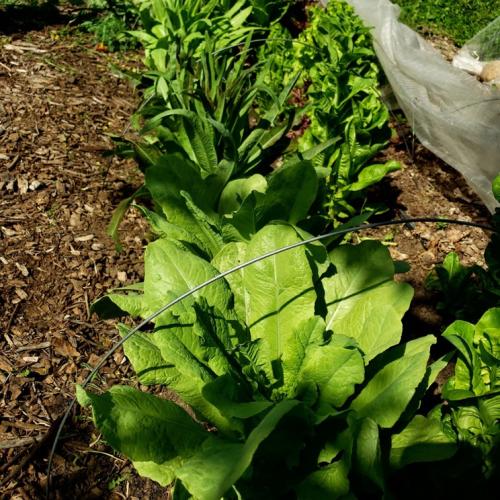
Advisor: Ga Young Chung
Celtuce is a type of lettuce consumed primarily for its stem. Celtuce is day length-sensitive, which means that long photoperiods promote premature flowering through a process of stem elongation known as “bolting”. Bolting causes celtuce to become bitter and limits the growing season, since successive plantings in late spring will bolt and become inedible before harvest. Like head lettuce, celtuce can also be eaten for its leaves, which are typically green and lance-shaped.
Since 2021, the SCOPE project has partnered with Second Generation Seeds and Prof. Ga Young Chung (Department of Asian American Studies) to breed new varieties of celtuce with reduced daylength sensitivity, improved palatability during bolting, and new color and leaf shape combinations. Farmers in the Second Generation Seeds network are evaluating existing celtuce varieties while students in SCOPE make crosses between varieties of celtuce and head lettuce, thereby creating a new participatory breeding project framework where farmers, not just students, are the primary decision makers.
The celtuce project is part of the Asian American Seed Stewards project, and received funding from the Public Impact Research Initiative and Global Affairs.

